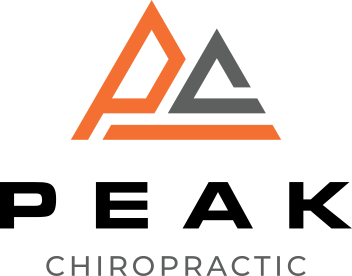If you're grappling with sciatica pain in North Plains, you might be wondering about effective, budget-friendly relief options. You can start by exploring local exercise classes that focus on stretching and core strength, which are essential for alleviating discomfort. Don't overlook over-the-counter medications; they can provide immediate relief when used correctly. Additionally, adjusting your diet to include anti-inflammatory foods could make a significant difference. But there's more to ponder that could enhance your relief journey, so let's discuss some practical strategies you might not have thought of yet.
Understanding Sciatica Pain
Sciatica pain can feel like a sharp, shooting sensation that travels from your lower back down through your legs. You might experience this discomfort due to irritation or compression of the sciatic nerve, which runs from your lower back through your hips and buttocks and down each leg. This nerve can become affected by various factors, leading to pain, numbness, or tingling sensations.
Often, sciatica is the result of a herniated disc, spinal stenosis, or even muscle inflammation. When the discs in your spine shift out of place, they can put pressure on your sciatic nerve, triggering that familiar pain.
You might also notice that your symptoms worsen when you sit for prolonged periods, twist your back, or engage in activities that stress your lower back.
It's important to recognize that sciatica pain isn't a standalone issue; it's a symptom of an underlying problem. Understanding the root cause can be essential in addressing your discomfort.
You might find that lifestyle factors, like poor posture or lack of exercise, contribute to your pain.
Stretching Exercises for Relief
Stretching exercises can be a game-changer for easing sciatica pain.
By incorporating effective techniques into your daily routine, you can greatly improve your comfort and mobility.
Let's explore some simple stretches that you can easily fit into your day.
Effective Stretching Techniques
Wondering how you can alleviate sciatica pain at home? Effective stretching techniques can provide significant relief.
Start with the piriformis stretch. Sit on the floor with your legs extended. Cross your right ankle over your left knee, forming a figure four. Gently pull your left thigh toward your chest. Hold this position for 20-30 seconds, then switch sides.
Next, try the seated hamstring stretch. Sit with one leg extended and the other bent. Reach toward the toes of the extended leg. Keep your back straight and hold for 20-30 seconds. This stretch helps release tension in your lower back and hamstrings.
The child's pose is another great option. Kneel on the floor, then sit back on your heels and stretch your arms forward on the ground. Breathe deeply and hold for 30 seconds. This position helps elongate your spine and relieve pressure on the sciatic nerve.
Finally, consider the knee-to-chest stretch. Lie on your back and pull one knee toward your chest. Hold for 20-30 seconds before switching legs.
Incorporating these stretches into your routine can help manage sciatica pain effectively.
Daily Routine Integration
Incorporating stretching exercises into your daily routine can make a significant difference in managing sciatica pain. Start by setting aside a specific time each day, whether it's morning or evening, to dedicate to your stretches. Consistency is key, so find a time that works best for you.
Begin with gentle stretches that focus on the lower back and legs. Simple moves like the seated hamstring stretch or the knee-to-chest stretch can help relieve tension. You don't need a lot of space; you can even do them on your living room floor.
Once you've established a routine, gradually increase the duration and intensity of your stretches. Aim for at least 10-15 minutes each day. Listening to your body is essential—if a stretch feels uncomfortable, ease off to avoid further pain.
Consider integrating stretches during breaks at work or while watching TV. Short, frequent sessions can be just as beneficial as longer ones.
Strengthening Your Core
Strengthening your core is essential for managing sciatica pain and preventing future flare-ups.
By focusing on core stability exercises, you'll enhance your overall strength and support your spine better.
A strong core not only helps alleviate discomfort but also improves your posture and daily movements.
Core Stability Exercises
Building a strong core is essential for managing sciatica pain effectively. Core stability exercises help you strengthen the muscles around your abdomen, back, and pelvis, providing better support for your spine. When your core is stable, it can alleviate pressure on the sciatic nerve, reducing discomfort.
Start with simple exercises like planks and bridges. For a plank, position yourself face down, resting on your forearms and toes, keeping your body straight. Hold this position for 20-30 seconds, gradually increasing the time as you get stronger.
Bridges are another great option. Lie on your back with your knees bent and feet flat. Lift your hips off the ground, squeezing your glutes, and hold for a few seconds before lowering.
Incorporate side-lying leg raises to target your obliques. Lie on your side, keeping your legs straight, and lift the top leg towards the ceiling. Hold for a moment, then lower it back down. Aim for 10-15 repetitions on each side.
Remember to listen to your body, and if an exercise aggravates your pain, stop immediately. Consistency is key, so try to practice these exercises a few times a week for ideal results.
Importance of Core Strength
A strong core is essential for overall health and plays a considerable role in relieving sciatica pain. When your core muscles—those in your abdomen, back, and pelvis—are strong, they provide better support for your spine. This support reduces the pressure on the sciatic nerve, helping to alleviate discomfort.
Focusing on core strength can improve your posture and stability, minimizing the risk of injuries that may trigger sciatica flare-ups. By engaging in exercises specifically aimed at strengthening these muscles, you'll enhance your body's ability to distribute weight evenly and maintain proper alignment.
Incorporating planks, bridges, and pelvic tilts into your routine can considerably boost your core strength. Aim for consistency; even a few minutes daily can lead to noticeable improvements.
Heat and Cold Therapy
When sciatica pain strikes, using heat and cold therapy can provide quick relief. Both methods are simple, effective, and affordable, making them perfect for managing your discomfort at home.
Start with cold therapy. Applying a cold pack or a bag of ice wrapped in a towel to the painful area can help reduce inflammation and numb the sharp pain. Aim for about 15-20 minutes at a time, and make sure to give your skin a break to prevent frostbite. This method is particularly helpful right after an activity that aggravates your sciatica.
Once the initial inflammation subsides, switch to heat therapy. A heating pad, warm towel, or hot water bottle can soothe the muscles and increase blood flow to the area, promoting healing. Use heat for 15-20 minutes, too, but be cautious not to fall asleep with it on. You can opt for a warm bath or shower as an alternative, which can also help relieve tension.
It's important to listen to your body. If cold or heat worsens your symptoms, discontinue use and try the other method. Alternating between heat and cold can also be beneficial, as it combines the advantages of both therapies.
Affordable Over-the-Counter Options
Finding affordable over-the-counter options for sciatica relief can be a game changer in managing your pain. When you're dealing with discomfort, quick access to effective solutions can make all the difference. One of the most common choices is nonsteroidal anti-inflammatory drugs (NSAIDs) like ibuprofen or naproxen. These can help reduce inflammation and alleviate pain, allowing you to return to your daily activities with less discomfort.
Another option is acetaminophen, which can relieve pain for those who may not tolerate NSAIDs well. It's important to follow the recommended dosages to avoid any adverse effects.
Additionally, topical analgesics, such as creams or patches containing menthol or capsaicin, can provide localized relief. These products are easy to apply and can offer a soothing effect right where you need it.
If you're looking for something a bit different, consider dietary supplements like turmeric or omega-3 fatty acids, which may help reduce inflammation over time. While not immediate pain relievers, they can be beneficial as part of a long-term management plan.
Lastly, don't forget about the power of a good heating pad or cold pack. While technically not over-the-counter medications, they're affordable and can be incredibly effective when used alongside other treatments.
Posture and Ergonomics
How can proper posture and ergonomics play an essential role in managing sciatica? Maintaining good posture and using ergonomic practices can greatly alleviate pressure on your sciatic nerve, reducing pain and discomfort. When you sit or stand correctly, you help align your spine and pelvis, which minimizes strain on your lower back and legs.
Start by evaluating your workspace. If you spend long hours at a desk, make sure your chair supports your lower back. Use a chair with lumbar support, and keep your feet flat on the ground or on a footrest. Your knees should be level with your hips.
When using a computer, position the screen at eye level, so you don't have to hunch or strain your neck.
In addition to your work environment, pay attention to your posture throughout the day. Stand tall with your shoulders back and your head aligned over your spine. Avoid crossing your legs when sitting, as this can create imbalances in your pelvic region. Instead, try to keep your legs uncrossed and your hips open.
When lifting objects, bend at your knees, not your waist. Hold the object close to your body to reduce strain on your back.
Incorporating these ergonomic tips into your daily routine can help you manage your sciatica more effectively, allowing you to live a more comfortable and active life. Remember, small adjustments can lead to considerable improvements in your overall well-being.
Dietary Considerations
A balanced diet plays an essential role in managing sciatica symptoms. What you eat can directly impact inflammation and pain levels. To start, focus on incorporating anti-inflammatory foods into your meals. Leafy greens, berries, nuts, fatty fish, and olive oil are excellent choices. These foods help reduce inflammation, which can alleviate pressure on your sciatic nerve.
It's also important to stay hydrated. Drinking enough water aids in digestion and helps prevent muscle cramps, which can exacerbate discomfort. Aim for at least eight glasses of water a day, adjusting based on your activity level.
On the flip side, try to limit foods that can promote inflammation. Sugar, refined carbs, and processed foods might taste good, but they can worsen your sciatica symptoms. Pay attention to how certain foods affect your body; keeping a food diary can help identify triggers that lead to increased pain.
You might also consider adding supplements like omega-3 fatty acids and turmeric to your diet, as they're known for their anti-inflammatory properties. However, always consult with a healthcare professional before starting any new supplements.
Finally, maintaining a healthy weight is essential. Extra pounds can put additional strain on your back and sciatic nerve. By making mindful dietary choices, you can manage your weight and potentially reduce the frequency and intensity of your sciatica pain.
Local Resources and Support
Where can you turn for help with sciatica relief in your community? North Plains offers several local resources and support systems to help you manage your sciatica pain effectively and affordably.
Start by visiting your local health clinics, where you can find professionals who specialize in pain management and physical therapy. These clinics often provide sliding scale fees or accept various insurance plans, making it easier to access care.
You might also want to explore community centers that offer exercise classes specifically designed for individuals with back pain or sciatica. Gentle yoga or Pilates can help improve flexibility and strengthen the muscles supporting your spine.
Check out local gyms or health clubs, as they often have specialized programs to cater to your needs.
Don't forget about support groups! Local libraries or community centers may host meetings where you can connect with others who understand what you're going through. Sharing experiences and coping strategies can be incredibly beneficial for your mental well-being.
Additionally, consider reaching out to local chiropractors or massage therapists who can offer alternative treatments that may provide relief. Many of them offer initial consultations at no charge or have special rates for first-time clients.
Finally, online community platforms like Facebook or Meetup can help you find local groups focused on health and wellness. Engaging with others in your area can lead to valuable insights and support for managing your sciatica effectively.
Conclusion
Incorporating these tips into your routine can make a real difference in managing sciatica pain affordably. By engaging in stretching and core-strengthening exercises, utilizing heat and cold therapy, and making dietary adjustments, you'll find relief while boosting your overall well-being. Don't forget to explore local resources and support groups—they can offer valuable insights and encouragement. Remember, taking small steps consistently will lead to significant improvements in your quality of life. You've got this!



